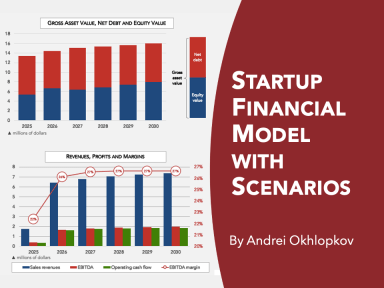
Publication number: ELQ-26168-1
View all versions & Certificate

Startup Financial Model with Scenarios
A comprehensive and professional yet user-friendly model for a startup investment with debt leverage
Further information
Perform a detailed analysis of a startup investment with debt leverage
Use this model if you are considering an investment into a startup. The model is very comprehensive and provides great flexibility at all investment stages.
Every project is unique and every model requires amendments and adjustments. Contact me if you need help with this or require an entire model built from scratch.




















